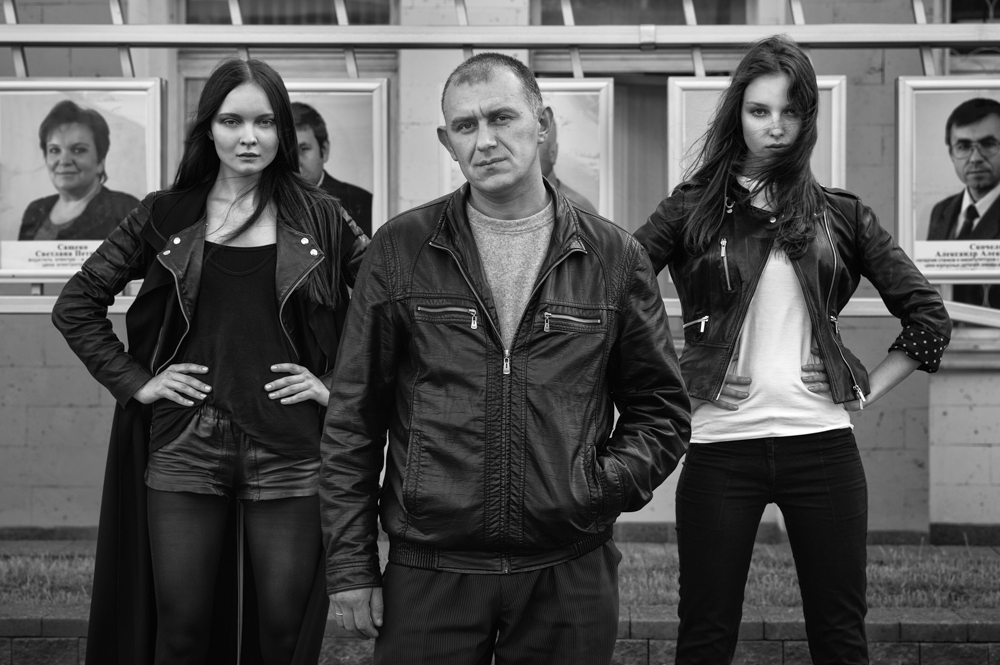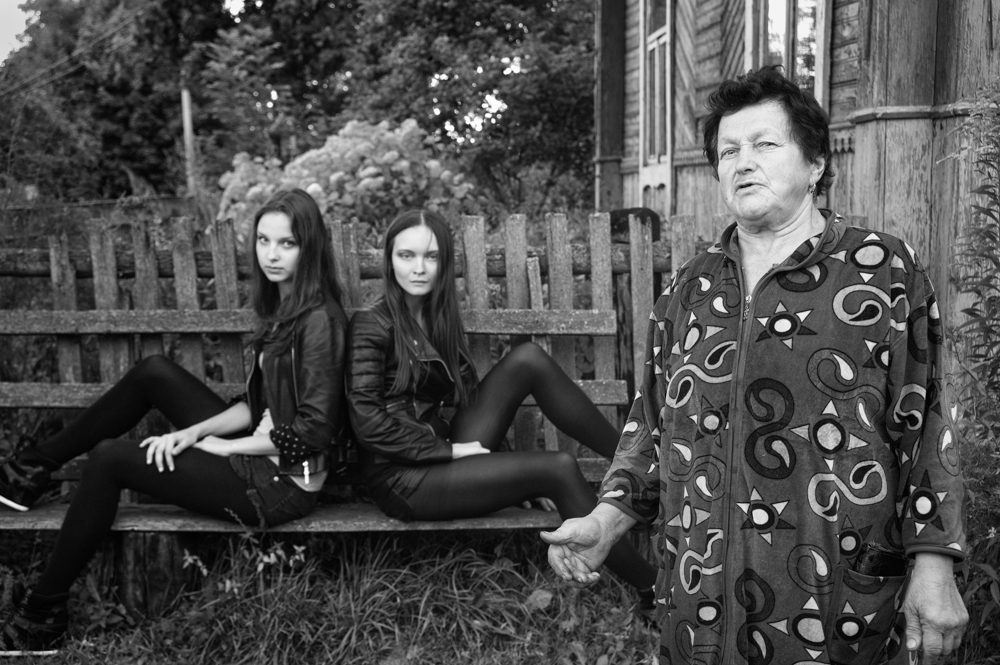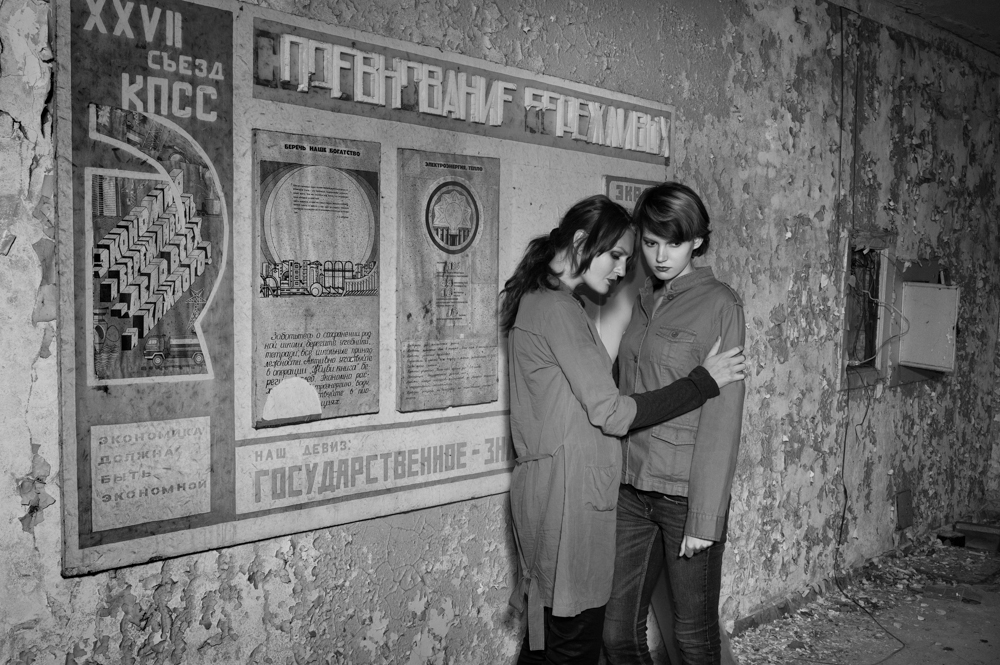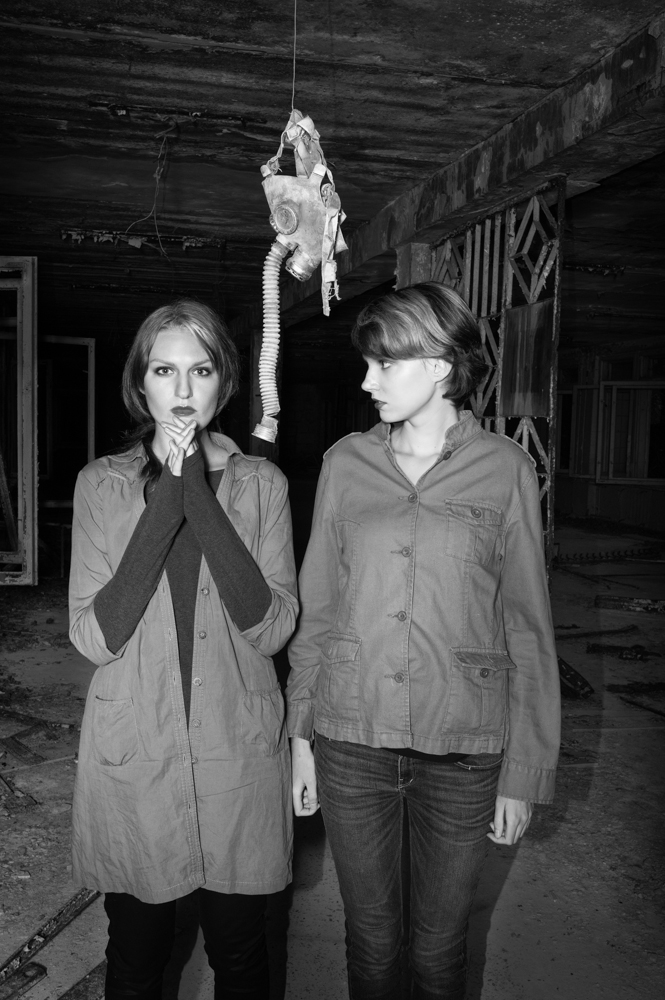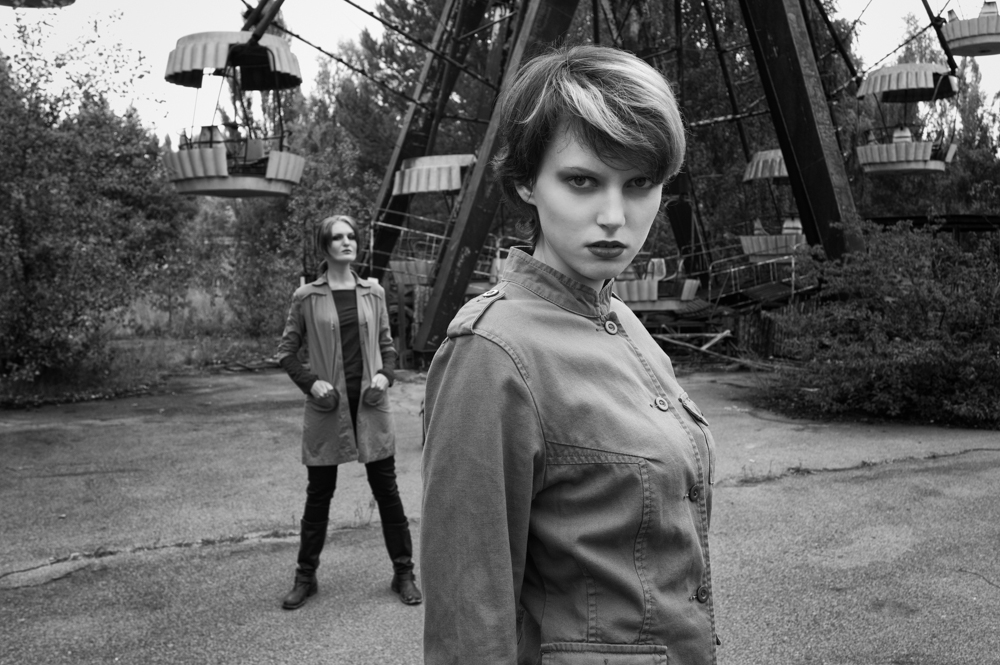Chernogirls Act I: Minsk-Chernobyl
Chernogirls Act I: Minsk-Chernobyl portrays the uneasy coexistence between a post-Soviet generation and relics of its prehistory. Act I takes place in August 2013 around Minsk, the capital of Belarus, and in Ukraine’s Chernobyl Nuclear Power Plant Zone of Alienation (also known as the Chernobyl Exclusion Zone). The Chernobyl Nuclear Power Plant, and the city of Pripyat that housed its employees, were intended to symbolize the Soviet Union. In one of history’s more chilling ironies, the image-makers exceeded all expectations: The disaster itself shone an unwanted spotlight on gaping inadequacies in a notoriously secretive state. The ill-managed, torturous, aftermath mirrored the collapse of that system. Down to the present day, the Chernobyl disaster casts a long shadow – and has become a metaphor for the Soviet system. The aptly named Zone of Alienation straddles the border of Ukraine and Belarus. The deepest physical scars of the Chernobyl disaster might be on the Ukrainian side. However, Belarus is more deeply marked by the Soviet past – operated by a regime that wallows in visual and textual language of the “good old days.” Streets in the center of Minsk are still named after Marx and Engels. Even the secret police is still called “KGB.” Homage heaped upon homage, to conjure up a past in which this impoverished present country of 9½ million was a constituent part of a superpower. But the very surfeit of nostalgia unintentionally reveals another association: that of a swansong, with all its terrifying inevitability. From here emanate the Chernogirls: heiresses of the Soviet past but decidedly not its products. Educated, and emancipated; individualistic and disinclined to obey authority, they are framed by Soviet-era settings and conceptions, but misfits in them. Flagrantly unrepresentative of their own societies – arguably of any mainstream, they embody what lies ahead: an inevitable break with the past.
Marc Erwin Babej is a fine art and documentary photographer who works exclusively in black-and-white. Born in Frankfurt, Germany, in 1970, he received a B.A. in history from Brown University and an M.Sc. from Columbia University Graduate School of Journalism. Marc’s background in social sciences, marketing strategy, media and entertainment pervades his photographic work. Uneasy coexistences are a predominant theme: his images surface inner conflicts and, in so doing, expose seemingly contradictory beliefs. Conflict is a key means of representation – a stance that embraces the viewer with one arm, while holding him at a distance with the other. Marc’s image-making method calls for intensive collaboration with cast members. Members of his still-image film ensemble Mercury Theatre, feature in a variety of roles across the work. Marc’s work is published regularly – both in general media and in international art publications. He also writes a column about luminaries in art and documentary photography for Der Spiegel and American Photo.
